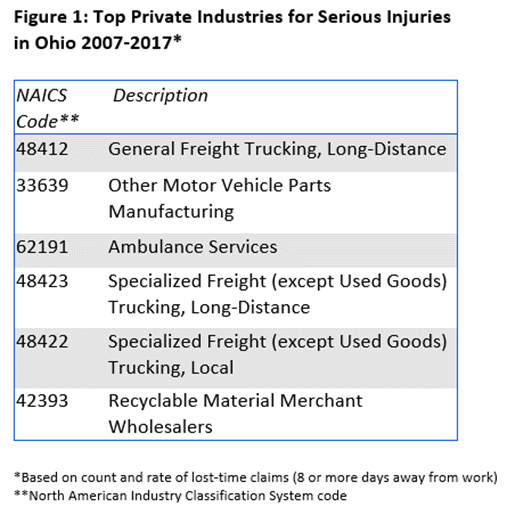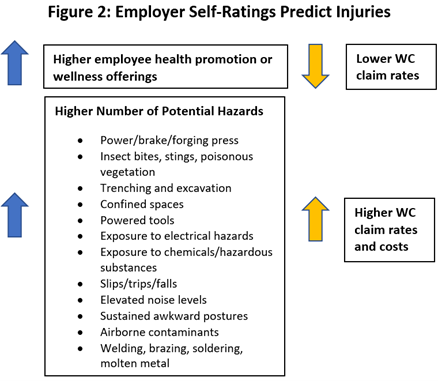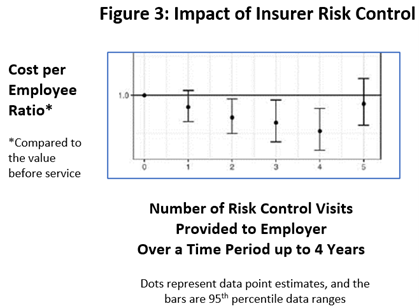Center for Workers’ Compensation Studies
The National Institute for Occupational Safety and Health (NIOSH) Center for Workers’ Compensation Studies works with partners in the insurance industry, health care providers, labor, employers, trade associations, professional organizations, and academia. The program aims to:
- Expand use of state-level workers’ compensation (WC) claims data for research and prevention.
- Identify and communicate interventions most effective at preventing illness and injury.
- Encourage collaborations between public health and workers’ compensation communities.
- Build the capacity of states to use WC claims data for prevention purposes through grants, partnerships, and technical assistance.
- Evaluate approaches to preventing illness and injury by working with insurers. These approaches include insurer sponsored engineering control grant programs, consulting services, and training.
- Distribute information on the most effective prevention approaches to insurers, state workers’ compensation bureaus, and state departments of health. This primarily includes interventions to prevent injuries, but also includes best practices for treatment of illness and injury, and issues related to return-to-work.
- Host webinars and meetings to encourage communication between the WC industry and public health partners.
- Funded studies and hosted meetings for states to understand the impact of COVID-19 through WC, such as the effect on claim composition and injured worker treatment.
- Conducted claim studies for detailed causation across industries (Fig. 1) and higher risk industries (landscaping and construction) that insurers and employers use to focus interventions in Ohio.
- Developed a claims dashboard for Wyoming Workforce Services to use to identify prevention needs.
- Developed a crosswalk between diagnoses categories (from ICD-9 to 10) that researchers can use for coding work-related medical data.
- Determined that employer-completed hazard identification assessments may be useful to employers in prioritizing safety improvement efforts, and insurers may use the identifications to target safety resources to companies with high injury risk (Fig. 2).
- Determined that insurer risk control services (Fig. 3) can reduce injury cost rates, providing some justification to continue or expand services where possible.
- Reviewed cannabis reimbursement for work-related health conditions by states’ WC insurance laws and regulations and identified needed research to ensure efficacy of treatment and safety of workers.
- Publish claims analyses for cost by detailed causation across industries, specific diagnoses (such as hearing loss), and high-risk industries (firefighting and law enforcement).
- Expand services to WC bureaus and departments of health to assist in data linkage, visualization, and text mining.
- Complete studies with Ohio Bureau of Workers’ Compensation and Wyoming Miners Hospital to examine the impact of work and medical treatment types on disability and opioid use.
- Publish a study to identify factors associated with drug and alcohol use disorders among workers.
- Complete a study on improving safety interventions in the construction industry.
- Collaborate with the American Industrial Hygiene Association on standardizing industrial hygiene data.

Mention of any company or product does not constitute endorsement by the National Institute for Occupational Safety and Health, Centers for Disease Control and Prevention
The Center for Workers’ Compensation Studies uses workers’ compensation data and systems to improve workplace safety and health. This snapshot shows recent accomplishments and upcoming work.



The impact of risk control services on reducing workers’ compensation costs was cumulative up to the fourth visit but diminished thereafter.
Source: State-based worker's compensation insurer's risk control services
To learn more, visit
https://www.cdc.gov/niosh/topics/workercomp/cwcs/
